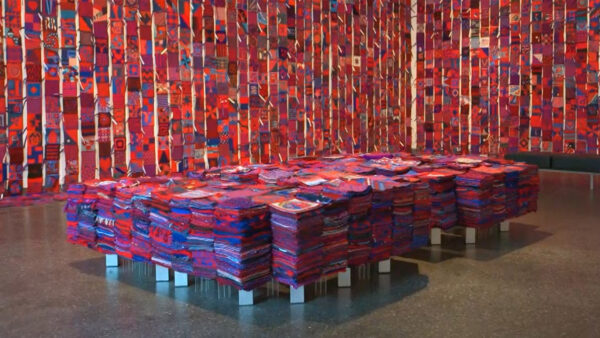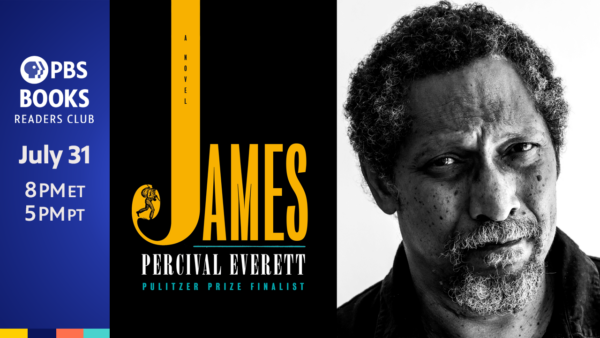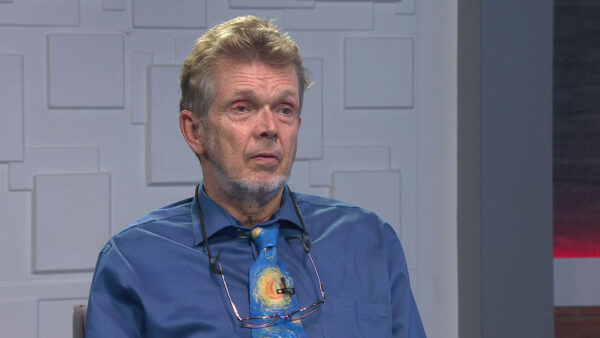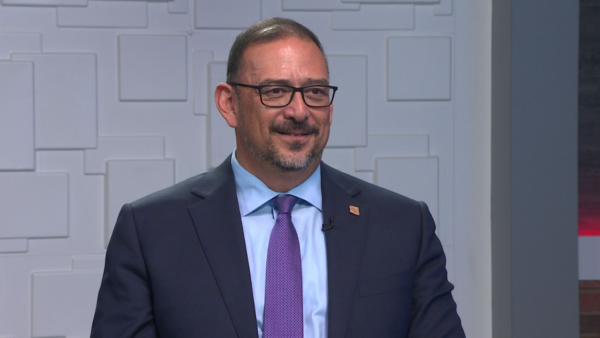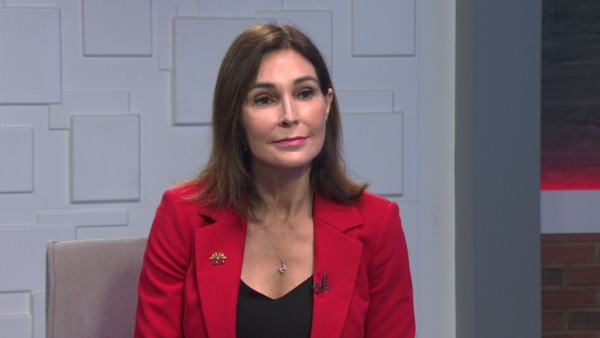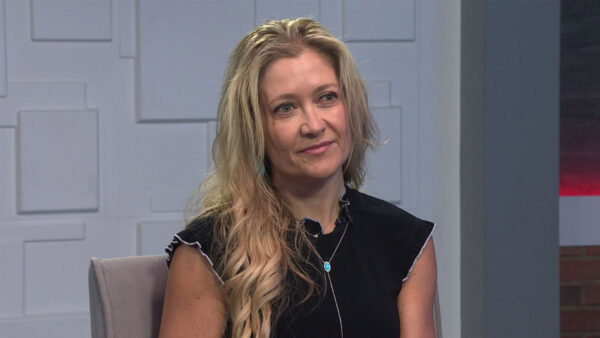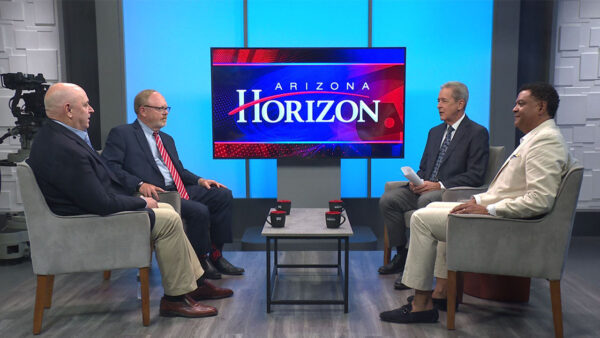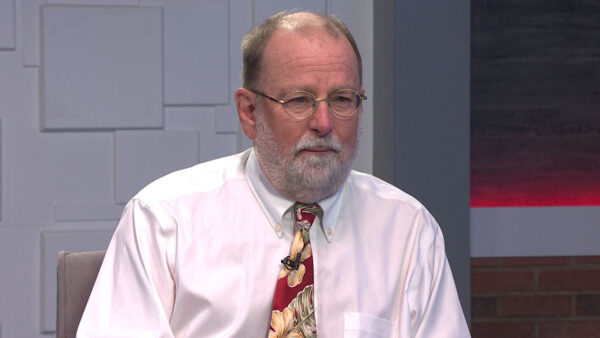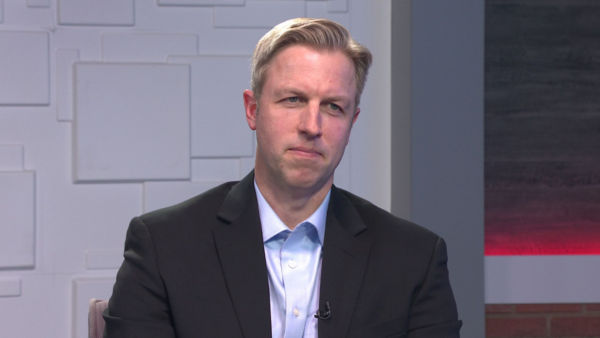Tonight, Eight, Arizona PBS airs the new five-part series, We Shall Remain: American Experience. It covers 300 years of pivotal moments in American history from the Native American perspective. White Mountain Apache filmmaker Dustinn Craig produced a feature-length, biographic documentary for the series about the life and times of the famous Chiricahua Apache, Geronimo. Craig talks about the film and his work as a filmmaker.
Ted Simons:
Native American filmmaker Dustinn Craig has come a long way from filming his friends skateboarding. The White Mountain Apache tribal member will have a film on a national PBS series, "We Shall Remain." It's part of an "American Experience" series about Native Americans who fought to keep their lands. I'll talk to Craig in just a moment, but first, here's a clip from his film on Geronimo and a sample of his local production called "Home."
Narrator:
When Geronimo returned home, he ripped down his wife's paintings, tore apart strings of beads she'd made and gathered his children's toys. And just as Apaches had done for generations when loved ones died, he set everything his wife and children had owned on fire.
Silas Cochise:
Geronimo's attitude changed after his mother was killed. After his wife was killed. After his children were killed and so that created an attitude towards the non-natives.
Robert Geronimo:
It just changed him completely and totally.
Silas Cochise:
Maybe it wasn't -- it wasn't a wise thing to deal with things like that, but he wanted revenge.
Vernon Simmons:
Your wife's dead, your kids are dead, your mother's dead. That's your life. Taken away in an instant. Make you want to go and kill everybody.
Narrator:
I had no purpose left, Geronimo later recalled. My heart ached for revenge.
Interview Subject:
I really wanted to be home and I wanted my children to grow up and have similar experiences as I did.
Interview Subject:
Home is your own private piece of heaven.
Interview Subject:
I know that if I go away, and come back, there's going to be a place for me here.
Ted Simons:
Here now is filmmaker Dustinn Craig. Dustinn, good to have you on the show. Thanks for joining us.
Dustinn Craig:
Thanks for having me.
Ted Simons:
Before we get into these things we're going to see on "We Shall Remain." You got into filmmaking shooting some skate kids? How'd that work out?
Dustinn Craig:
Yeah, actually, growing in White River, I think what first got me to get my dad's camcorder out was to film myself and my friends doing skateboard tricks. And a natural extension of having a two hour VHS tape full of skateboarding is wanting to take just the highlights so that forced me to learn to start editing, V.C.R. to V.C.R.
Ted Simons:
That's a big step from that to "We Shall Remain." How did you get involved with PBS?
Dustinn Craig:
I think it started in 2005. The executive producer of American Experience scheduled a meeting with me when I was at the Sundance Film Festival under a fellowship there. And that's when he first proposed -- that let me know they had a series they were working on and I guess that was my sort of induction into the "We Shall Remain" project.
Ted Simons:
Now, your film for "We Shall Remain" deals with Geronimo.
Dustinn Craig:
Uh-huh.
Ted Simons:
Why Geronimo, and did you learn things about this iconic figure, that you didn't know before?
Dustinn Craig:
Yeah, I think, you know, Geronimo, I think, number one is this incredible icon in American history. And so it's -- he's symbolic of many things but when American historians look at Geronimo, he most of all symbolizes the end of the Indian wars which for Native American people is a very difficult thing to contend with. So I think in deciding, you know, choosing the subjects for each of these films, "American Experience" really wanted to highlight periods of time and characters that were emblematic of larger ideas and happenings that took place in this country.
Ted Simons:
And Geronimo was a character. This was a complex character that had complex reactions inside of the Apache community.
Dustinn Craig:
Yeah, and I think, you know, Geronimo himself in -- if you start asking amongst the various Apache communities here in Arizona, in Mescalero, in Fort Sill, Oklahoma, I think you'll find a variety of different takes when it comes to who this person is and I think that acknowledges the fact that amongst Apaches -- I think from the outside it's easy to characterize us as one big group, but Apache people were comprised of a wide variety of autonomous groups. People who lived in different land bases throughout the entire southwest. Who really were related through culture and language, but for the most part, were, you know, existing on their own.
Ted Simons:
Now, the other films you have done that will not be seen on "We Shall Remain" are associated with the Heard Museum. We saw one of them, "Home," which had three screens on it. Talk to us about what you were looking for with these films. Just the concept of home?
Dustinn Craig:
Yeah, the concept of home is a very broad one, obviously. And especially in native communities, home I guess can be viewed as the essence of everything that is near and dear to us. The place where our language is, our cultures, our stories, our people reside. It's a place where our cultures thrive and continue to exist today. So in the creation of the home film, the Heard Museum selected five to six different native communities and -- for this project, we had to go out to believe Taos Pueblo, Navajo, White Mountain Apache -- each community has a four to six-minute segment in the larger completed film.
Ted Simons:
And you did a film, quickly here, it's not going to be seen on "We Shall Remain," that's the Geronimo film. But you did a film on your great grandfather. How come?
Dustinn Craig:
The film about my great grandfather, Joseph Ivins, was inspired by the research into this history and I think it's definitely -- I think for me, learning about these iconic characters really inspired me to try and learn about my own family history because I think that's one of the drawbacks about larger than life characters who become, you know, mythified in American lore and maybe misappropriated in romantic novels and literature and caricatures that have evolved about native people. A way to sort of contrast the iconography of famous people is to bring the research down to home, to your own family experience. And I think in wanting to learn more about my great grandfather's story is really helpful in kind of understanding how significant, you know, each and every one of our families' decisions were in the early days of Arizona. And the United States.
Ted Simons:
Well, congratulations on the films and continued success. Thank you so much for joining us, we appreciate it.
Dustinn Craig:
Thanks for having me.


